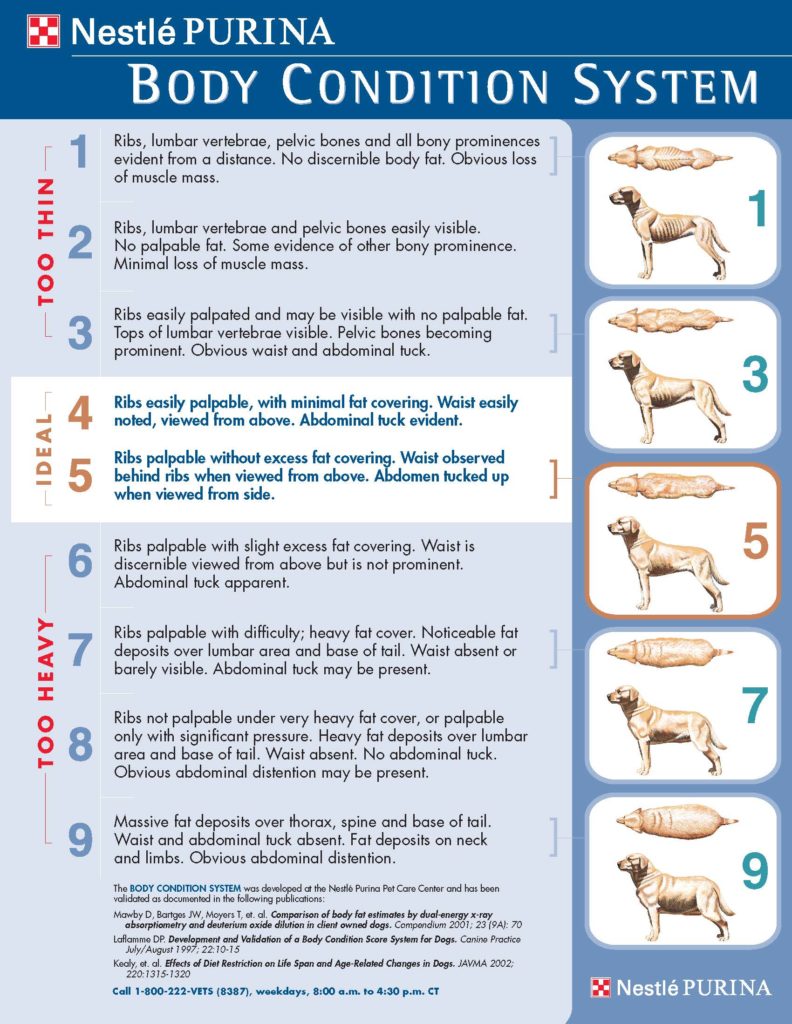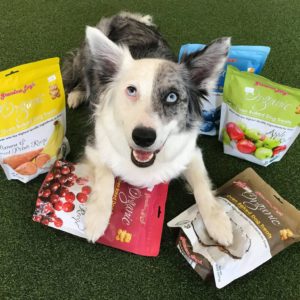Food is a big deal to dogs. We want our dogs to enjoy their training treats, their enrichment AND their meals. Using super yummy training treats is a big boost for your dog’s motivation during training. But you may find that he’s less interested in his meal times. Here are the things to think through if you’re experiencing this with your dog.
1. Am I overfeeding him?
I’ve often had clients express concern that their dog isn’t as interested in his meals since they started training. Many times I’ve then looked down to see an overweight dog. The dog simply doesn’t need as many calories as he’s being offered. The back of the dog food bag is a very rough guideline for the quantity to feed. Be sure you are using healthy training treats and healthy food choices for feeding enrichment. Then you can appropriately decrease the amount you feed at mealtime. This is especially true of puppies who should be earning most of their food through training and enrichment. Do a good assessment of your dog’s body condition using the graphic below from Tufts Veterinary School. If he is at (or above!) his ideal weight, the likely answer for his disinterest in mealtime is that he simply needs less. If he’s already lean, it’s time to get a little creative.
2. Have I made an effort to identify a food he really likes?
One of the keys is finding foods which your dog really likes. I enjoy my meal times and I want my dogs to enjoy theirs. Dogs certainly have individual taste preferences, just like humans do. Some dogs also seem to crave variety. Experiment with different brands or types of food. You can get free samples at our shops, and other specialty retailers. Some brands of kibble (like Fromm) offer their food in a variety of different proteins. You may have a dog that will enjoy switching foods often (mine do!).
Kibble is certainly a cost effective and convenient way to feed. But dogs typically prefer any other food form over kibble. So raw, canned or freeze dried have an advantage over kibble. If you feed kibble, recognize the fact that it is heavily processed (not a good thing). I feed kibble, but I try to partially overcome what processing takes away from taste and nutrition by adding a healthy mix-in to each meal. I use super yummy mix-ins, and I regularly switch what I’m using to keep it interesting. There are a variety of mix-ins and toppers commercially available. The best ones are freeze dried meats, which provide excellent flavor and nutrition. Or you can use an assortment of healthy fresh foods like bone broth or fresh meat. I also like to moisten any dried food before feeding. The natural diet of a canine certainly isn’t dehydrated. Adding moisture prior to feeding increases both ease of digestion and palatability.
3. What can I do behaviorally to help with his appetite?
Apart from choosing foods that your dog enjoys, there are things you can do to help the behavioral side of your dog’s appetite. It’s important to pick-up any food that remains after a short meal time (15 – 20 minutes). Food left laying out past that time window can cause the dog to psychologically devalue food. Pick up uneaten food and wait until the next meal time. Similarly, feeding too large of a portion can be a big turn-off to your dog. Decrease the quantity you’re feeding and you’ll typically notice that he shows more interest. Offering the food in enriching ways (e.g. in a Topple or snuffle mat) is often very helpful.
Sometimes people wonder if they should stop using training treats to increase their dogs interest in meal time. I disagree with that approach. Food is such a powerful motivator for dogs. It is very challenging to do positive training without it. I’d much rather do a few simple things to improve my dog’s interest in his meal time, rather than cut out the absolute best way to motivate my dog in training.
I’m confident that you’ll be able to work through this issue in a way that results in your dog being excited about mealtime AND a willing partner in training!


